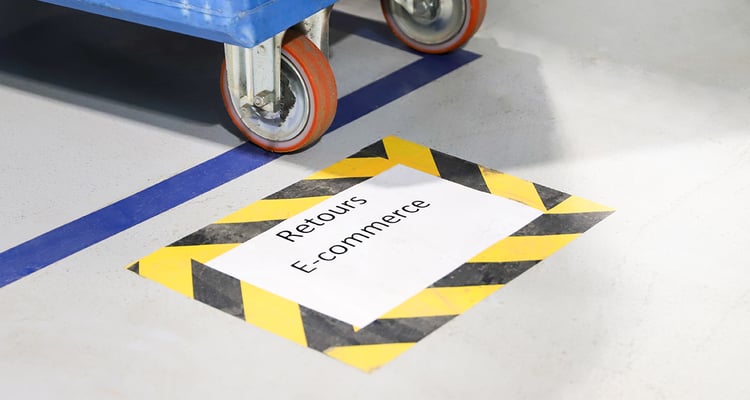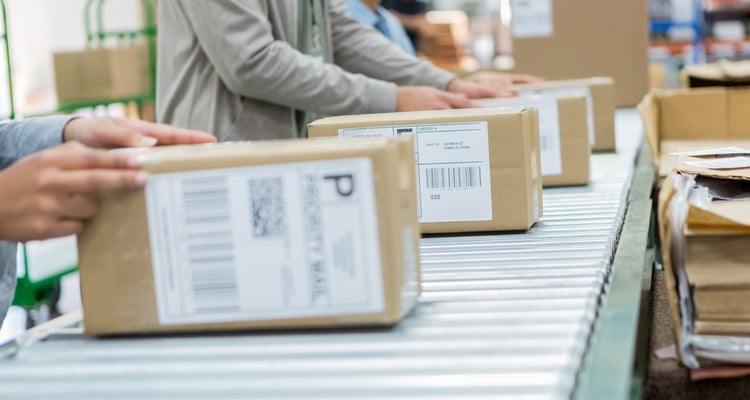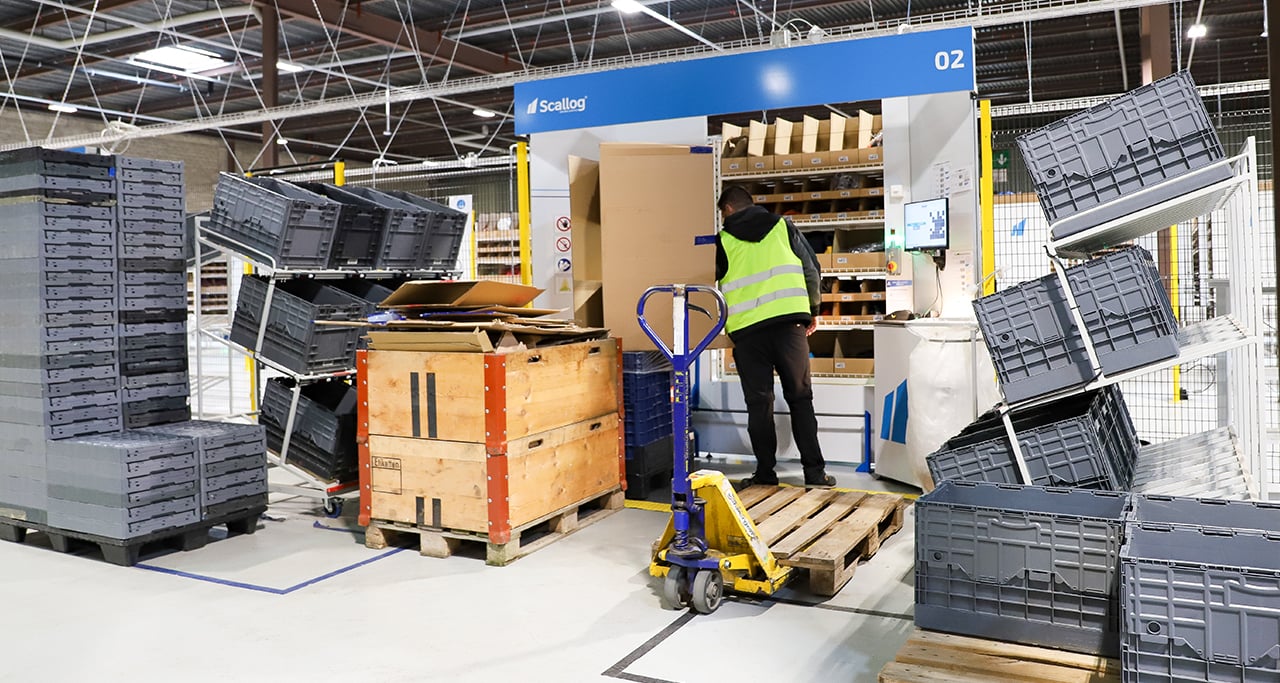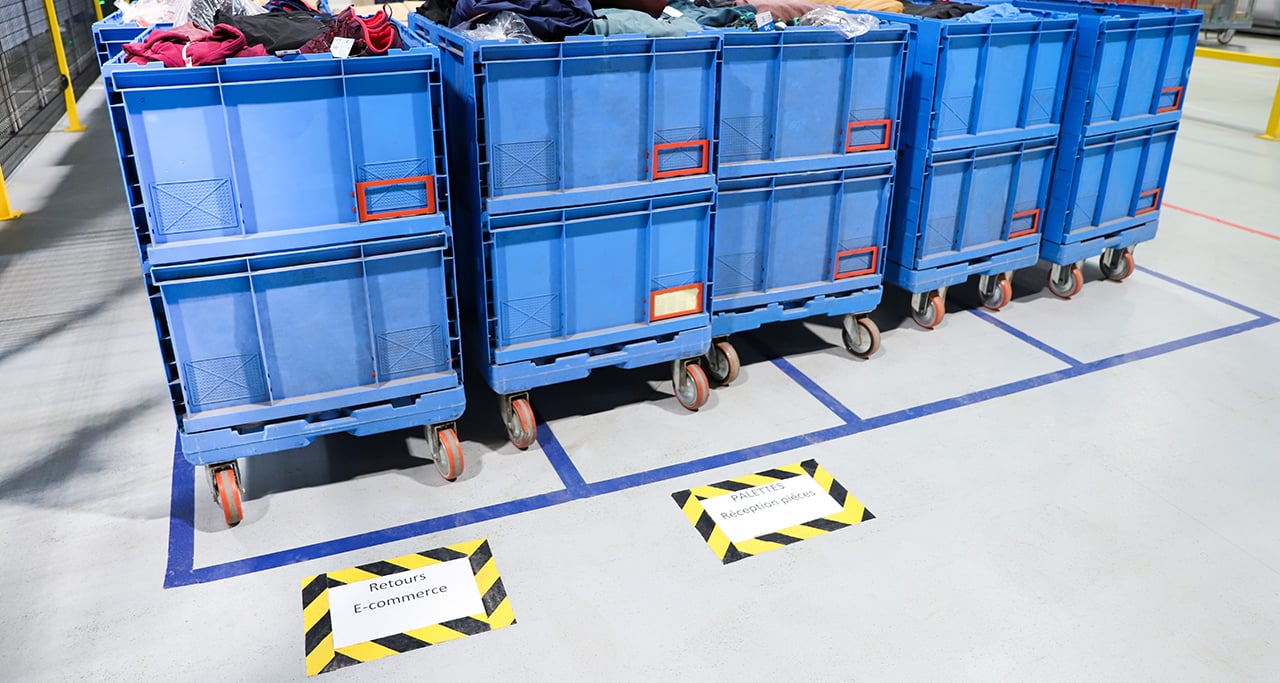Free returns are a key selling point, after price, but these days, managing free returns comes at an increasingly high logistics cost for retailers and e-commerce firms: an average of €10 per product, not including shipping!
 Preparation of returns in the Decathlon warehouse - © Scallog / Decathlon
Preparation of returns in the Decathlon warehouse - © Scallog / Decathlon
The fact is, returns management is monopolising a growing share of warehouse resources, from receiving to inspection and storage, and comes with significant shipping costs at a time when petrol prices are surging. Given the rising number of returned e-commerce orders coupled with changing consumer expectations when it comes to service quality and speedy returns, it’s becoming essential for retailers and e-commerce firms to be proactive in industrialising their logistics processes to give returned products a second life quickly!
Here’s a few tips and a look at some best practices, including robotics, for optimising reverse logistics at companies that sell personal and household goods.
Think in advance about returns management, from the purchase itself to the warehouse!
As with shipping, the best return is the one that doesn’t happen. It’s now vital for retail companies to optimise the journey and experience for customers making purchases online, by providing ‘helpful’ information to aid consumers in making their decision, including advice on sizes and equipment. Customers need support, even guidance, in their purchases so as to reduce the number of ‘wrong’ orders. In the face of changing consumer habits, from the rise of e-commerce to ‘try before you buy’, it’s becoming essential for retailers to think through and prepare their reverse logistics ahead of time, to accelerate every step in the process and reduce the time that items are sitting idle.
Customers are reassured – and become more loyal – when they have the option of a return. Therefore, as soon as an order is placed, retailers and e-commerce firms need to provide for cardboard packaging with a bar-code label that makes it easier to return goods and consolidates returns for bulk delivery to the warehouse(s).

Meanwhile, within the warehouse, flows and processing need to be optimised to prevent overburdened storage areas and absorb returned products into the inventory without disrupting procurement and picking, all while maintaining an appropriate inventory management process. Everything needs to be analysed and implemented so as to ease the workload for returns management operators and ensure an industrialised process that leads to faster processing.
Reverse logistics robotics, to speed up processing and reduce downtime!
There’s one technology that meets all those demands: Goods-to-Person robotisation, which speeds up returns processing without compromising on quality, so returned products can be quickly reintegrated into a traditional or alternative distribution channel.
In warehouses equipped with Scallog’s Goods-to-Person robotics solution,in which robots transport shelving units to operators, we’ve seen an eightfold increase in restocking and returns processing rates compared to manual operations!
 Preparation of returns in the Decathlon warehouse - © Scallog / Decathlon
Preparation of returns in the Decathlon warehouse - © Scallog / Decathlon
For example, Decathlon relies on our solution – including multi-SKU shelving units, with space for products of different sizes – in its dedicated product returns area so those goods can be managed more efficiently. In concrete terms, the operator puts the returned product in the designated empty space on the shelving unit and scans it; it will then be removed first when a spate of new orders arrives.
 This solution eliminates unnecessary operator trips through the warehouse and reduces onerous tasks. Plus, our solution comes with software intelligence that goes beyond simply automating all of the logistical steps, such as inspection, shelving and storage – it also helps you track returns to prevent inventory losses and errors and (with help from a WMS or WCS) generate statistics on the number of returns by product category. That’s often a key indicator of a manufacturing defect or customer dissatisfaction.
This solution eliminates unnecessary operator trips through the warehouse and reduces onerous tasks. Plus, our solution comes with software intelligence that goes beyond simply automating all of the logistical steps, such as inspection, shelving and storage – it also helps you track returns to prevent inventory losses and errors and (with help from a WMS or WCS) generate statistics on the number of returns by product category. That’s often a key indicator of a manufacturing defect or customer dissatisfaction.
 Preparation of returns in the Decathlon warehouse - © Scallog / Decathlon
Preparation of returns in the Decathlon warehouse - © Scallog / Decathlon
In the face of inflation, eroding profits and environmental impact, reverse logistics management is becoming a critical financial and CSR challenge for retailers and e-commerce firms, for whom product storage and downtime costs money by the day and even by the hour, on top of shipping costs. According to the National Retail Federation, expenses related to returns management could top $604 billion for retailers worldwide by 2025!
As proof, a number of high-profile brand names, including Zara and H&M, have already ended free returns. Retailers and e-commerce firms that want to keep their free returns policies, which are hugely popular among consumers, have every incentive to reduce and optimise those returns – especially in France, where the AGEC law that came into effect on 1st January 2022 bans the destruction of unsold non-food inventory!




Laisser nous votre commentaire